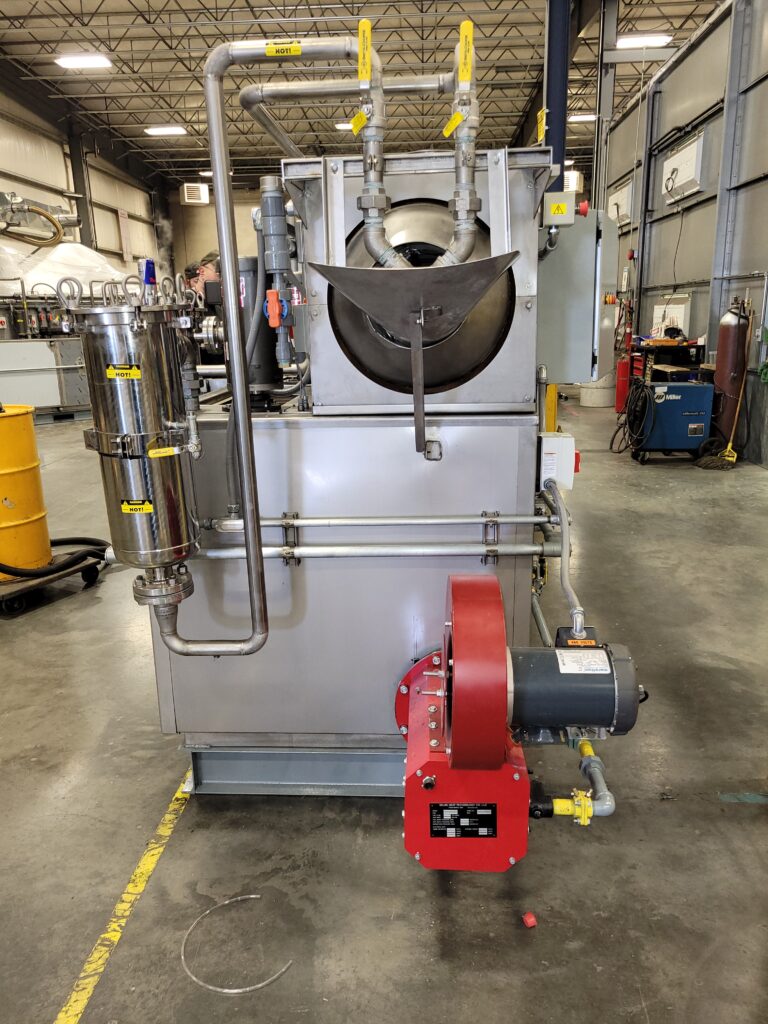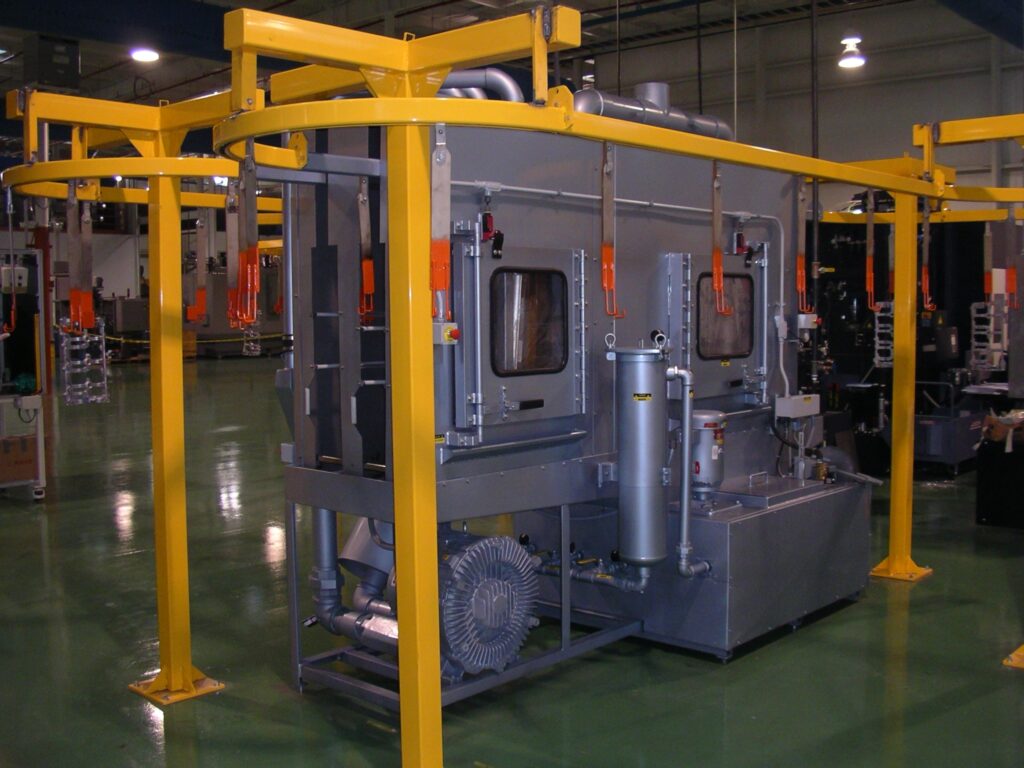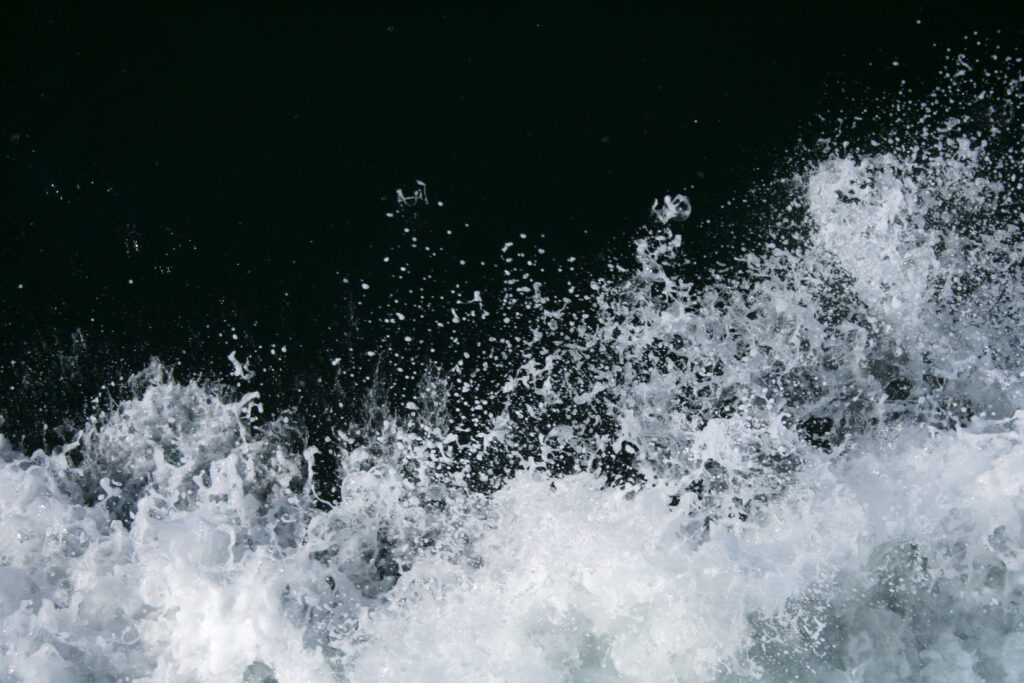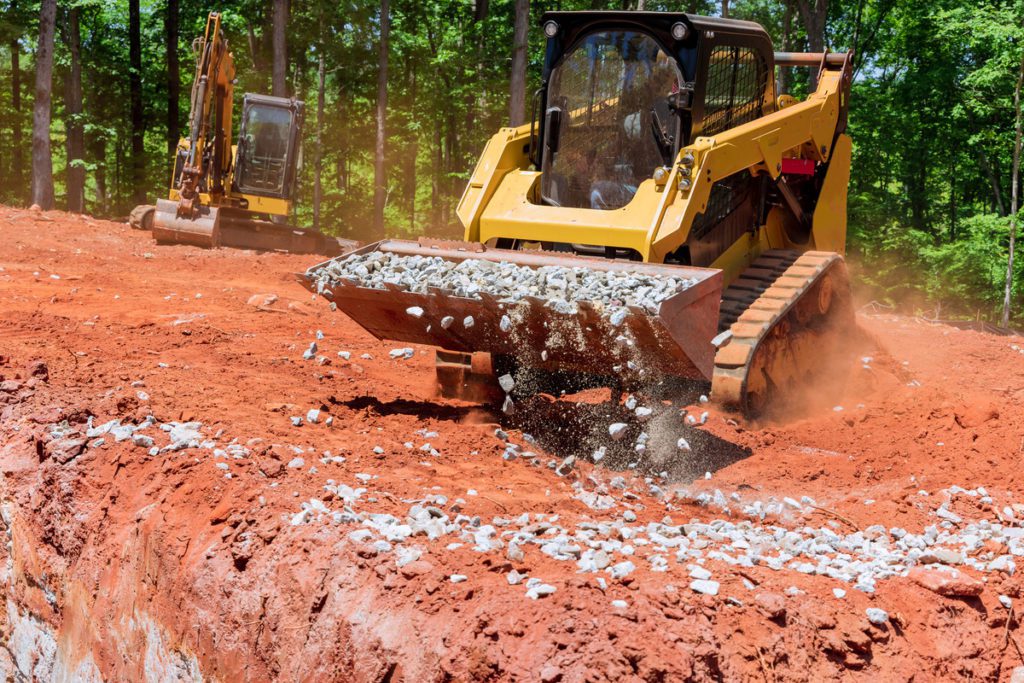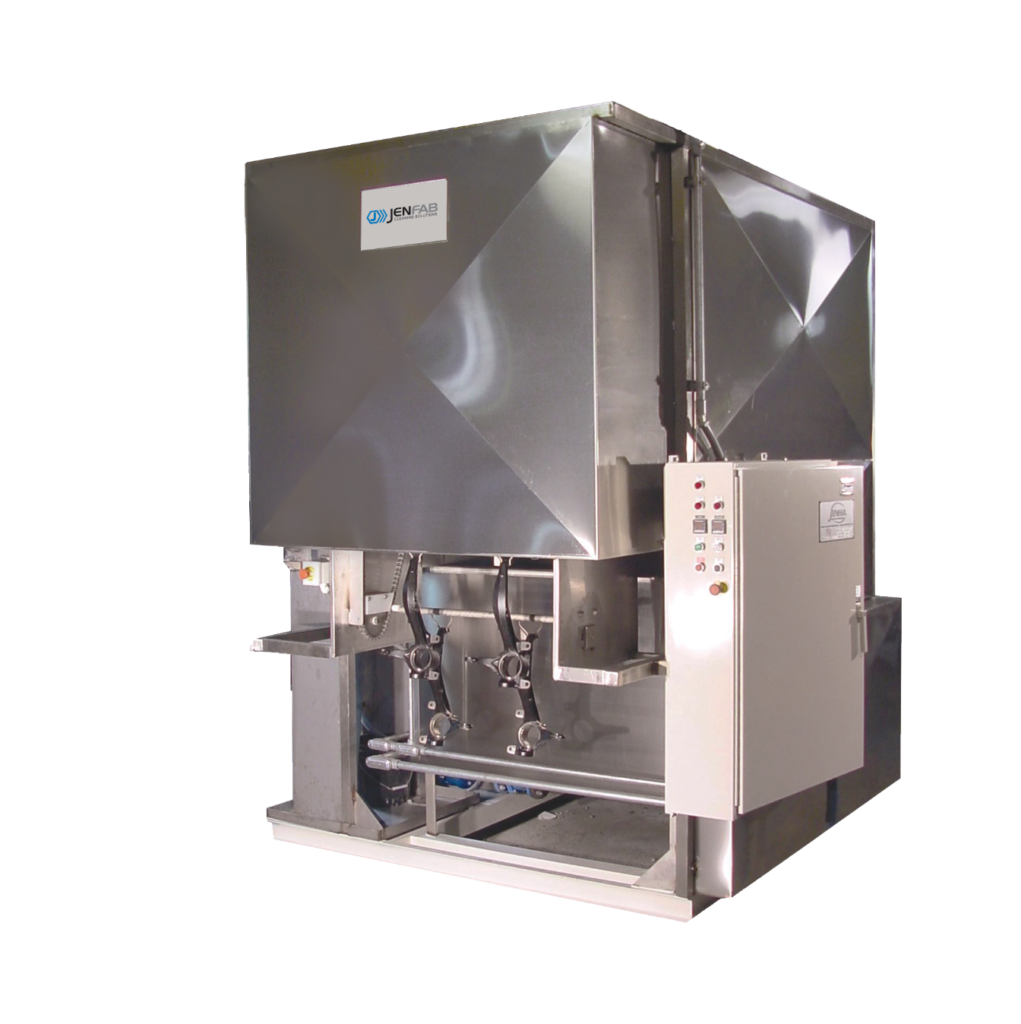There’s a difference between parts cleaning and precision parts cleaning. Many manufacturers only need to rinse off soils. Others need to remove soils at the microscopic level. Precision cleaning does just that.
What is precision cleaning, and what does it entail? From typical industry applications to required testing and verification, let’s walk through what you need to know about precision parts cleaning.
Jump to:
- Precision Cleaning for Aerospace
- Medical Implants Cleaning
- How to Precision Clean Parts?
- What’s A Particle Count Analysis?
- Best Parts Washers for Precision Cleaning
Precision Parts Cleaning: What Is It?
Precision parts cleaning targets soils down to micrometer-sized particles. All soils are removed with an extreme degree of accuracy.
Multiple mechanical actions may be present for precision cleaning. If you use an aqueous parts washer, the machine may combine spray, agitation and ultrasonics. There may be multiple cleaning tanks so that the parts receive several rinses.
Parts that require precision cleaning include rocket launching components, electronic chips and biotech parts. Without exact, down-to-the-micron cleaning, these components would not function properly. Depending on the industry, failed parts could cause injuries and deaths.
How Big Is a Micrometer?
A micrometer, or micron (µm), measures particle size. Cleaning at a microscopic level means analyzing microns. Just how big is a micron in inches? One inch is equal to 25,400 microns.
Let’s put that into perspective. A single strand of human hair is about 50 to 100 µm, while one grain of table salt is about 40 µm. A single silky thread from a spider web could be 2 to 3 µm in diameter. The smallest particles we can see with the human eye are around 40 to 50 µm.
Micrometer measurements help you select appropriate filters. In an aqueous parts washer, filtering systems restore the cleaning solution and keep unwanted soils from hanging around. The smaller the micron filter rating, the more materials it will remove. A smaller number refers to catching smaller particles.
Applications for Precision Cleaning
Medical, aerospace and military manufacturers must meet stringent standards. These standards can be set by the client, industry or a larger regulatory organization. Products must follow guidelines set by the American Society for Testing and Materials (ASTM), Institute of Environmental Sciences and Technology (IEST) and U.S. Food & Drug Administration (FDA).
Precision Cleaning Aerospace Parts
Precision cleaning aerospace parts helps keep people safe. Airplane, helicopter and spacecraft pilots and passengers put their trust in the machines they fly or use to travel. As aerospace parts become more complex, manufacturers need cleaning methods that meet strict standards. Dirt caught inside aircraft parts could fracture and damage machinery.
Many aerospace parts use aluminum alloys that can damage easily during cleaning and processes like welding. Aluminum must be cleaned initially to remove soils and again to remove surface oxides. Failing to clean the surface before welding could result in weld porosity and cracks.
Cracks or flaws in aerospace parts are detrimental to the people relying on them. If landing gears fracture, they may refuse to deploy, strike at the wrong angle or fail to retract. When landing gears don’t extend, pilots must try to land safely without them. Belly landings damage the aircraft and put everyone on the aircraft in danger.
Precision Cleaning Medical Implants & Equipment
The medical industry requires precision cleaning to remove contaminants and avoid exposing them to patients. Medical equipment and implant manufacturers often need multi-stage cleaning processes and ultrasonics. If not adequately cleaned, medical equipment could stop working, give incorrect readings or spread disease.
Medical devices, such as knee and hip implants or artificial heart valves, are placed inside the human body. Tiny metal shavings or residue from polishing pastes pose health risks to the individual receiving the implant. Medical implant cleaning is crucial to prevent infections and death.
Temporary stainless steel implants must undergo passivation, removing free iron from the part surfaces. According to ASTM specification A967, passivation can be done with a nitric acid solution, citric acid solution or electrochemical treatment. Parts must be rinsed immediately following their exposure to the passivating solution.
Other Applications for Precision Parts Cleaning
Precision parts cleaning is also necessary for defense, electronic and pharmaceutical industries. Printed circuit boards (PCBs) utilize precision cleaning before installation, and components for jewelry are cleaned for better aesthetics. Often, optical parts like lenses or fiber optics require spot-free precision cleaning. Even the automotive industry may require precision cleaning for fuel injectors, compressors or sensors.
Methods to Precision Clean Parts
Once you know you need precision cleaning, the next question is how you will clean. What you use to achieve the clean you need varies by the part’s composition and cleanliness requirements. You may wish to clean a few parts manually or clean numerous parts automatically.
Before making a decision, you should consider the following:
- Part material
- Part geometry
- Soil composition
- Amount/level of soils
- Cleanliness requirements
Wipes & Brushes
You can clean parts by hand using lint- and particle-free wipes and brushes. Usually, this rudimentary cleaning method is reserved for small volumes of delicate parts. Cleaning parts by hand is labor-intensive and time-consuming.
Spray Equipment & Rinses
Manually spraying or rinsing parts is another way to clean. Spray bottle cleaning or pressure washers blast off soils, aiding the cleaning agent in its work. With this method, it’s more difficult to save and reuse the cleaning agent. Manual spray cleaning requires an operator and plenty of cleaner, so labor and material costs can be expensive over time.
Aqueous Parts Washers
An aqueous parts washer makes precision cleaning easy and cost-effective. With a parts washer, you cut down on the time and labor it takes to clean. Aqueous parts washers are automatic, making them an excellent choice for precision cleaning large volumes of components.
Ultrasonic Cleaning
For precision cleaning, parts washers are often designed with ultrasonics. Components with complex threads, rough surfaces or blind holes benefit from liquid cavitation.
Ultrasonic cleaning removes finer particles by emitting sound waves into the aqueous cleaning solution. These sound waves cause water molecules to implode when they strike an object. As the water molecules implode, they send shockwaves through the parts, loosening debris.
Standard ultrasonic frequencies range from 25 kHz to 40 kHz. Higher frequencies are more effective at removing sub-microscopic particles.
Testing & Verifying Precision Cleaning
Precision cleaning goes beyond cleaning parts. The process includes testing and verifying cleanliness afterward.
Contaminants must be measured. Even if a part looks clean, particles or residues may still cover it. Customers may require Millipore testing, particle count analyses and non-volatile residue testing to confirm the part’s cleanliness.
The Institute of Environmental Sciences and Technology recommends cleaning practices in IEST-STD-CC1246E, titled “Product Cleanliness Levels – Applications, Requirements and Determination.” By this standard, precision cleaning is achieved by verifying that solid contaminants and residues are less than one micron.
Particle Count Analysis
How many particles are on the part’s surface? A particle count analysis gives you the exact number and size of the contaminants that remain after cleaning. The results of the analysis inform whether or not you need to try a different cleaning method.
Particle count testing measures solid contaminants and fibers by collecting a volume of solution based on the wetted surface area of the part. The solution is filtered through a 0.45 µm (micron) filter. Then the filter is examined under a microscope. The tester counts the number of particles and measures each one down to 10 µm.
Particle count analyses are performed before and after cleaning to compare the difference between the soiled and cleaned parts.
Gravimetric Non-Volatile Residue (NVR) Analysis
The non-volatile residue test method, also known as the NVR test, measures the residues that remain on the cleaned part. Residues are shapeless, sticky, semi-liquid contaminants. Often, residues in precision parts cleaning are hydrocarbon oils and greases.
The first step in an NVR test is to collect a sample of the cleaning solution and residue, filtering it to remove solid contaminants. Then the sample is placed on a weighing dish and evaporated for a higher concentration of residue. Once the sample dries, it is weighed—subtracting the weight of the dish. The resulting number is the mass of the residues left on the cleaned part.
Ultraviolet Light Inspection
You can also use ultraviolet light (UV) to verify part cleanliness. Most hydrocarbon oils and greases will show up under ultraviolet light. The light causes these contaminants to fluoresce so you can see them with the naked eye. Particle count testing and NVR tests are more effective when you need to know exact measurements.
Precision Cleaning Parts Washers
Choose a precision cleaning method that saves your team time and effort. Aqueous parts washers automate the cleaning process, improving production and paying for themselves over time. Jenfab’s precision parts cleaning systems are proven to be effective by companies across industries.
Check out two of our top precision cleaning machines:
- LeanClean 360. The LeanClean 360 is perfect for precision batch washing. Parts with complex configurations and cavities are cleaned with a combination of spray, immersion, ultrasonics and a rotating basket.
- Vertical Agitation Washers. For continual precision cleaning, a custom vertical agitation washer effectively cleans small- to large-sized parts. These parts washers combine immersion, up and down agitation, and rotation to flush out recesses and blind holes.
Jenfab Cleaning Solutions approaches all projects with a custom-first mindset. We can add ultrasonic cleaning to almost all of our parts washers. Ultrasonics can be easily added to monorail washers, rotary drum washers and conveyor belt washers.
Test Wash Your Parts (for Free!)
Before buying an aqueous parts washer, you want to confirm its effectiveness. What better way than to test wash your parts? After all, your components need to meet stringent standards to function correctly and keep people safe. At Jenfab Cleaning Solutions, we put your precision cleaning parts washer to the test.
Our in-house test lab analyzes your parts before and after cleaning—for free. Simply request testing and mail us your parts. We’ll provide a detailed report with the particle count, size of debris and total molecular weight of the soils.
Request a quote. Improve your precision cleaning process with a custom parts washer from Jenfab Cleaning Solutions.












